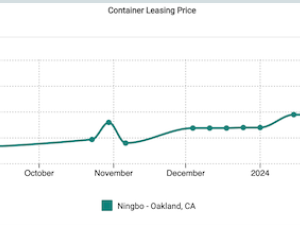3600 ESI vessels operate more efficiently than required
posted by AJOT | Dec 04 2015 at 08:43 AM | Liner Shipping
Some 3600 vessels have registered, five years after the International Association for Ports and Harbors (IAPH) developed the Environmental Ship Index (ESI). All these vessels operate more efficiently on emissions than legally required. In addition, these vessels are eligible for rewards from 40 so-called 'incentive providers' supporting the ESI.
On 4 December the IAPH will present the results of five years of the ESI in Paris, at an event associated with COP21, the Climate Summit of the United Nations. 'We're very proud of these achievements by ports across the globe over five years', says Fer van de Laar. Over the last five years he was closely involved in the index on behalf of the IAPH, a body representing over 200 ports across the globe. 'The ESI appears to be a simple but powerful tool for ports, in supporting ship-owners at the vanguard who perform better than legally required. This way, they contribute to a better environment and assist the port in obtaining their licence to operate.'
Environmental performance
ESI certification is issued at the request of the vessel by the World Ports Climate Initiative (see www.environmentalshipindex.org) of the International Association for Ports and Harbors, a body representing over 200 ports across the globe. The ESI was designed by the ports of Le Havre, Bremen, Hamburg, Antwerp, Amsterdam and Rotterdam. The index expresses the environmental performance of vessels in terms of the emission of air pollutants (NOx and SOx) and CO2. The performance is measured on a scale of 0 to 100, whereby a score of 1 already indicates an improvement in relation to the current environmental regulations for shipping, while 100 is exceptional. Of the 3610 ESI vessels, 175 ocean going vessels have a score of over 50. Four of these vessels have obtained the maximum score of 100!
Rewarders
Ports and other maritime service providers across the globe can use the index to reward vessels, thereby encouraging more sustainable behaviour in the shipping industry. There are now 40 rewarders. These include ports such as Long Beach and Tokyo, but also smaller ports such as Port Nelson in New Zealand and Flam in Norway. Rewards vary from a discount of about five per cent on harbour duties, to up to 100%. 'The number of rewarders has stagnated, but we are working hard to increase this again, because more ports taking part means more vessels will be registered', according to Van de Laar.
Future of the ESI
The participating ports are discussing the future of the ESI. 'Environmental regulations for shipping are becoming stricter all the time, but we want to make sure vessels remain eligible for ESI discounts. We want to encourage efficient shipping practice, but it is not easy to develop standards for this. The many factors that have to be taken into account - type of cargo, engines, volume, draft – make it a complex process. But we have found a solution: each vessel becomes self-referential. Vessels that report to us their annual miles travelled and the fuel consumed, receive incentive points. If we have three years of data we can compare this and see whether they sailed more efficiently in subsequent years. A new award can be attached to this', says Fer van de Laar.





